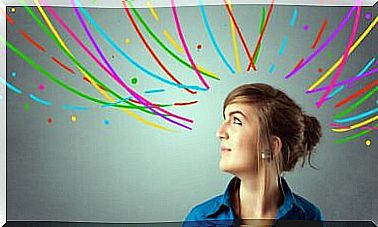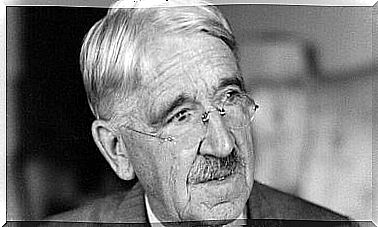Brain Area Of guilt
The brain area of guilt seems to function differently in each of us. While on average most of us feel its impact, it would seem that certain people don’t even activate it. Examples are narcissistic people or potentially violent profiles.
When it comes to guilt, we must first analyze two very interesting aspects. First, it is a key emotion in human behavior. Although it is described in a more negative way than anything else (Fischer, Shaver and Carnochan, 1990), in reality this emotion helps us to regulate our social behavior.
The weight of guilt urges us to correct certain behaviors and pushes people to behave correctly. By doing this, we can avoid the suffering associated with that weight that can settle in our brain for a lifetime. On the other hand, and certainly many know what we are talking about, it is one of the most difficult emotions to manage.
Sigmund Freud said that the human being sets up sophisticated defense mechanisms to protect themselves from its influence. Because his shadow, the memory of what he did or did not do, is extremely complicated to manage.
Yet to feel the stigma of one’s pain is to have a conscience, which many people seem unable to feel.
Where is the brain area of the culprit?
A few months ago we witnessed a new mass murder. The attack on two mosques in the city of Christchurch, New Zealand, introduced a new profile to the criminal landscape. For the first time, the murderer filmed and broadcast the massacre live on Facebook, trying to reach as many people and inspire others to do the same thing, as he himself confessed.
One aspect that undoubtedly draws attention to the act is the absolute coldness of the protagonist. As a video game, he limited himself to shooting at anyone who stood in front of him, with absolute tranquility.
The brutality, the lack of conscience and any glimmer of guilt towards his actions is more than evident. What happens to these people? What mechanisms govern or explain these behaviors?
The lateral orbitofrontal cortex, the brain area of guilt
Monash University funded a study based precisely on the use of video games with a high content of violence. Dr Molenberghs, in charge of the work, wanted to locate the brain area of the culprit. To this end, he used MRI to see what happened to the subjects involved in the experiment while playing video games in which large numbers of people have to be killed.
Brain scanners revealed a lack of neuronal activity in the lateral orbitofrontal cortex. This coincides perfectly with other research done previously by neurobiologist and philosopher Gerhard Roth. He has carried out extensive research in some prisons aimed at understanding how the brains of murderers, rapists and other inmates who have committed violent acts work.
The results turned out to be clear. Dr. Roth has named the brain area of guilt as the “dark patch of evil.” In the non-guilty person, the lateral orbifrontal cortex shows minimal activity. This may be due to the presence of a tumor, but in most cases the reason for this dysfunction is unclear.
Some psychologists believe that continued exposure to violence can foster addiction to this area. This could explain the behavior of the Christchurch killer, who claimed that part of his violence was born from his passion for video games. However, it is only one factor among many others that undoubtedly shape these dangerous profiles.
Feeling guilty makes us human
The brain area of guilt is in turn linked to the sense of shame. Both dimensions lead to a feeling of discomfort, pain and discomfort. At the same time, they are emotions that motivate us to improve, to behave differently to avoid this malaise.
All this takes on a positive connotation and in itself represents the essence of our human being, that is, it makes us social beings who want the best for themselves and for others. Well, this type of psycho-biological reality does not manifest itself in psychopaths, narcissists and people capable of causing harm without feeling restraining feelings.
The capacity for reflection towards the committed act and the empathy felt towards the victim of one’s abuse seem to be absent in these profiles. This can only scare us by putting us in front of an evident reality: characters like Brenton Tarrant, the Christchurch attacker, will continue to appear.
The dark spot that Dr. Gerhard Roth spoke of exists. The cerebral area of guilt does not work in the same way in each of us and can result in acts that are highly harmful to humanity.









